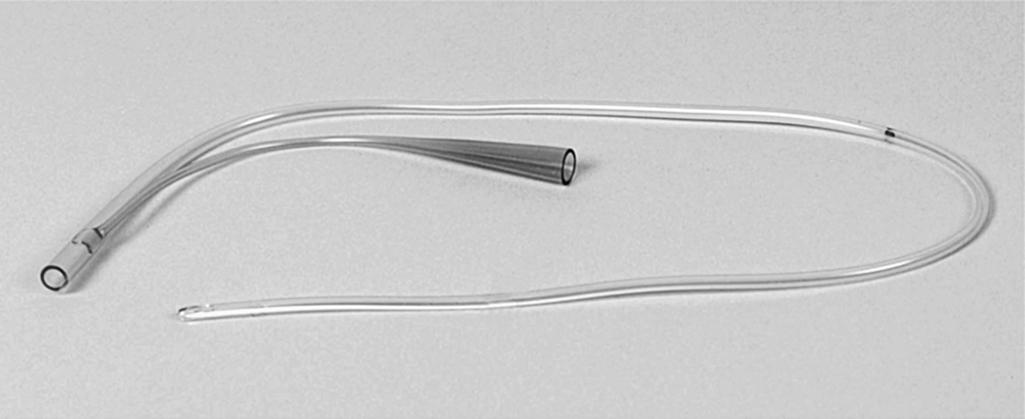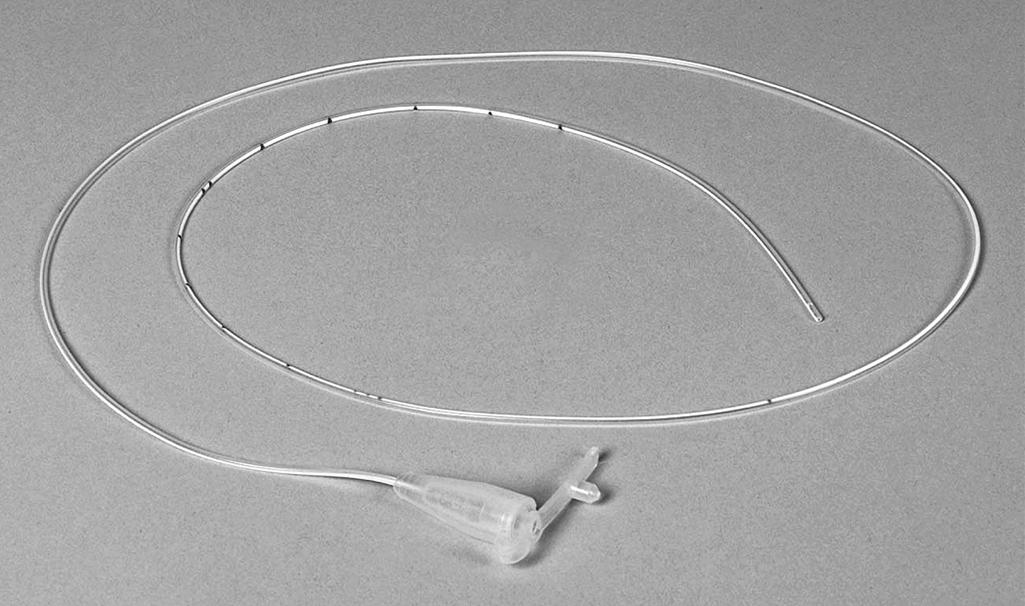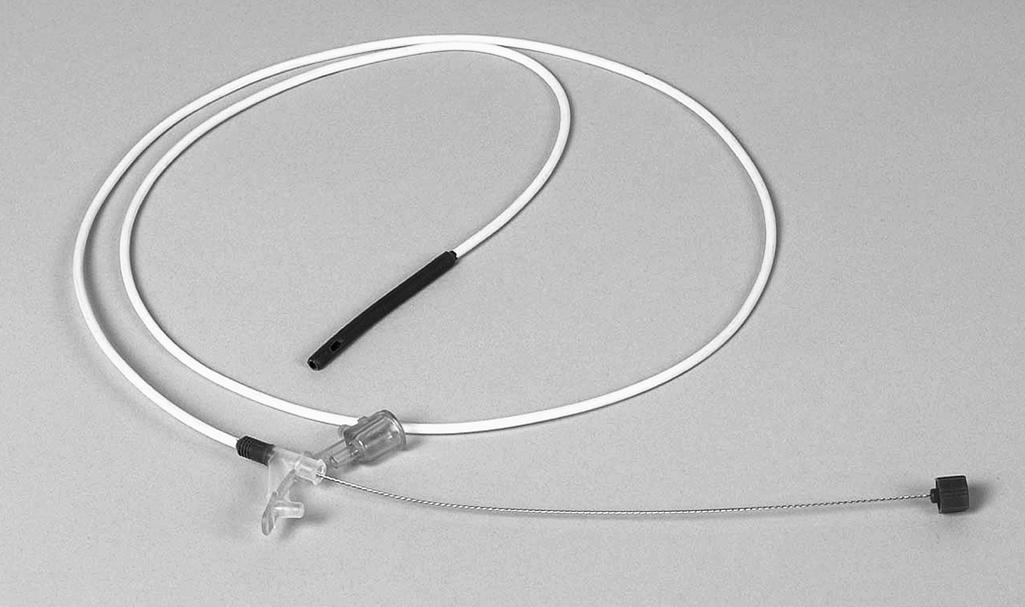Physical Address
304 North Cardinal St.
Dorchester Center, MA 02124
Tubes are an integral part of gastroenterology practice and have been used in clinical care as well as in research for more than a century. A multitude of tubes are available to allow access to the gastrointestinal (GI) tract. They vary by composition, inner and outer diameter, presence or absence of weighted tip, tip size and shape, and location and number of access and egress ports. There are tubes intended to remove content or decompress the GI tract as well as to introduce content, usually nutrients or medications, into the GI tract. They may be classified by their intended use and site of insertion ( Table 87.1 ). For example, nasogastric (or nasoenteric) tubes are placed through the nose into the stomach or small bowel. In some situations, orogastric or oroenteric tubes may be placed through the mouth and passed into the stomach or small bowel. Natural orifice tubes are generally easy to place but frequently become clogged or dislodged. If the tube is to be used over the long term, surgical placement is considered (gastrostomy, jejunostomy, or gastrojejunostomy). These tubes are placed through the skin (percutaneously) into the GI tract. Cecostomy tubes (access tubes placed percutaneously into the cecum) are now commonly used in antegrade continence programs to treat constipation and incontinence related to neurologic issues (e.g., spina bifida, meningomyelocele), anorectal malformations, pseudo-obstruction, or encopresis related to chronic intractable constipation. Tubes are also classified according to the technique of placement (surgical, laparoscopic, radiologic, or endoscopic).
| Type | Indications | Benefits | Considerations |
|---|---|---|---|
| Orogastric | Used mainly in premature infants or patients with no nasal access | Relatively inexpensive, easy to place, generally available | Risk of pulmonary aspiration due to misplacement or GER. Impaired swallowing. |
| Nasogastric | Short-term feedings in patients without vomiting or failure to protect airway | As for orogastric | Visible on face; irritation to nares, sinusitis. May interfere with oromotor development. Impairs patient mobility. |
| Nasoenteric (beyond pylorus) | Useful when aspiration, GER, and/or gastroparesis are present. Short-term feedings | Reduces vomiting and aspiration risk. NJ feed may allow earlier feeds in pancreatitis or early after surgery | Visible on face. Requires continuous rather than bolus feeds. Requires a pump. Placement more cumbersome and time consuming. Frequently dislodged. Risk of perforation or necrosis of intestine. |
| Gastrostomy (Stamm or PEG) | Useful for long-term feedings | Less likely to dislodge, greater patient comfort and mobility, no tube visible during day | Relatively more expensive and requires a procedure for placement. Stoma care needed. Risk of pulmonary aspiration or GER; stomal infection; scar. |
| G-J | Placed when there is a high risk of aspiration | Allow drainage of stomach and enteral feeds; useful when stomach function is impaired | May dislodge or migrate to stomach. Small-bore tubes clog. Requires monitoring and continuous infusion. Requires fluoroscopic or endoscopic placement. Risk of perforation. |
| Jejunostomy | Useful for long-term feedings | Allows drainage of stomach and enteral feeds; useful when stomach function is impaired; usually stable and less likely to dislodge | May dislodge or migrate to stomach. Small-bore tubes clog. Requires monitoring and continuous infusion. Requires fluoroscopic or endoscopic placement. Increased risk of perforation. Requires surgery. |
As with all medical procedures, complications may occur, and the decision to place a tube of any type requires care in patient selection and review of indications and desired outcomes. Selections of the appropriate tube and technique of placement as well as the actual performance of the procedure and then maintenance of access afterward are important aspects of proper care.
Tubes placed in the GI tract can be used to sample contents, to empty the stomach of content, or for decompression. Many such tubes are commonly available ( Table 87.2 ) and are generally larger in diameter with thicker walls. They are also more rigid and they do not collapse when suction is applied. Suction tubes are often made of polyurethane or polyvinyl chloride (PVC). PVC is rather firm and becomes less flexible and more brittle with exposure to gastric acid. The walls are not easily compressed or collapsed, and gastric content can easily be aspirated. PVC tubes are not recommended for tube feedings but may be used for medication administration. Some polyurethane tubes can be used for aspiration without collapsing. Silicon tubes are less suitable for suction.
| Andersen | Double lumen, stiff walled |
| Abbott-Rawson | Double lumen |
| Ewald | Single lumen |
| Harris | Single lumen, mercury-weighted tip |
| Levin | Single lumen |
| Miller-Abbott | Double lumen, balloon tip |
| Replogle | Double lumen |
Nasogastric or orogastric tubes are also used to remove stomach contents to examine the contents for diagnostic purposes—for example, gastric aspirate may be examined to detect blood or in preparation for a procedure such as endoscopy. Although commonly used in the past, gastric lavage is no longer considered routine in the treatment of poisoning or ingestions. , Decompression with suction is required when there is obstruction, ileus, or pernicious vomiting. Prophylactic nasogastric decompression after abdominal surgery is no longer recommended. Straight drainage tubes have a single lumen and multiple distal ports. If the tube has a single lumen (e.g., Levin, Ewald) it may be left open for venting or attached to intermittent suction. The latter is used to prevent aspiration of gastric mucosa into the tube. Tubes suitable for aspiration and decompression may have a second lumen for venting. Double-lumen tubes (e.g., Salem Sump, Andersen, and Replogle) are used specifically for decompression and have a second lumen that allows air in during suction, thus preventing the gastric mucosa from being pulled into the tube ports ( Fig. 87.1 ). These tubes may be used with continuous or intermittent suction. Both single-lumen and double-lumen tubes should be reevaluated often for patency. Irrigation with air or water can help to ensure an open lumen. The tube should be reevaluated periodically for possible migration beyond the pylorus or back into the esophagus.

Tubes are no longer designed for decompression of the small bowel and small bowel obstruction (Miller-Abbott, Harris). These are relatively more flexible than other tubes used for suction and have either a weighted or balloon tip. The tubes are passed nasally and positioned in the small bowel under endoscopy or fluoroscopy. They are usually left to drain. Some gastrojejunostomy tubes have two ports: one in the stomach and one in the small bowel. Nutrition and/or medications can be given into the small bowel (when appropriate) while there is decompression of the stomach.
When there is ongoing fluid loss from drainage of the stomach or small bowel, attention must be paid to the patient’s fluid balance. Replacement of GI losses and monitoring of electrolytes and urine output is also needed.
Ideally, all patients receive nutrition by mouth. However, when a child is unable to eat normally or when oral intake fails to meet a patient’s nutritional needs for any reason, alternative modes of nutrient delivery are considered. Intravenous routes are used when gut failure is present. Conversely, it is axiomatic that “if the gut works, use it.” Enteral feedings by tube are advantageous in maintaining gut function, promoting mucosal integrity, and reducing infection. There are also advantages in terms of cost and ease of use. However, it should not be assumed that enteral nutrition is safer than parenteral nutrition in all patients. In addition, patients often require some combination of enteral feedings and parenteral nutrition support.
Enteral access enables the delivery of nutrients and medications into the GI tract. Generally, feeding tubes have a smaller diameter and are softer than tubes used for decompression. They are most often made of polyurethane, silicone, or silicone elastomer. Polyurethane does not stiffen or discolor and permits a thinner walled construction. Silicone or silicone elastomer tubes are very soft and generally collapse when suction is used ( Fig. 87.2 ). They frequently require a stylet to facilitate placement.

Many nasoenteric tubes have weights on their distal tips ( Fig. 87.3 ). They come in several sizes, styles, and materials. Historically, weighted tips were thought to be advantageous when a tube was being advanced past the pylorus; however, research has shown that similar rates of passage are achieved using unweighted tubes. Furthermore, it is not clear whether weighted tubes stay in place longer than unweighted tubes.

Become a Clinical Tree membership for Full access and enjoy Unlimited articles
If you are a member. Log in here